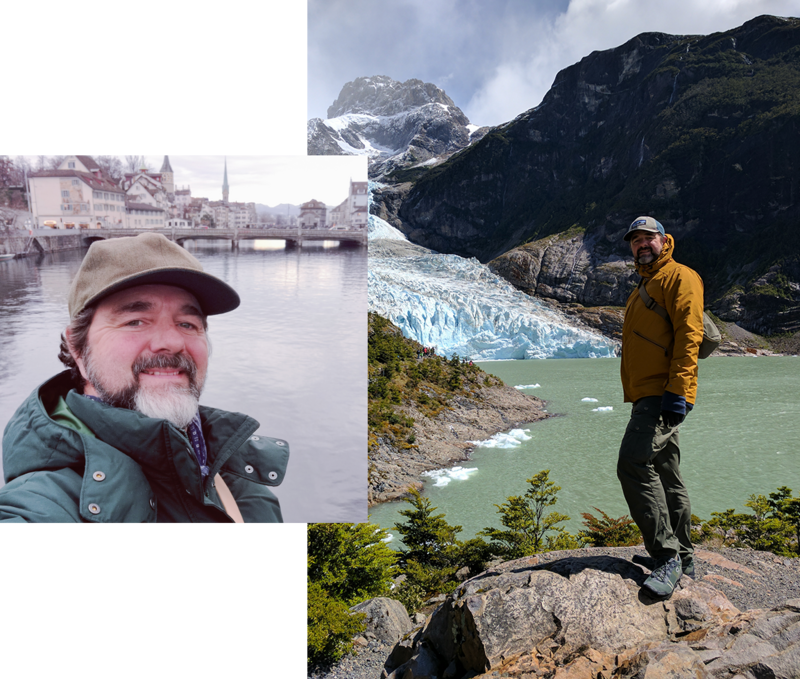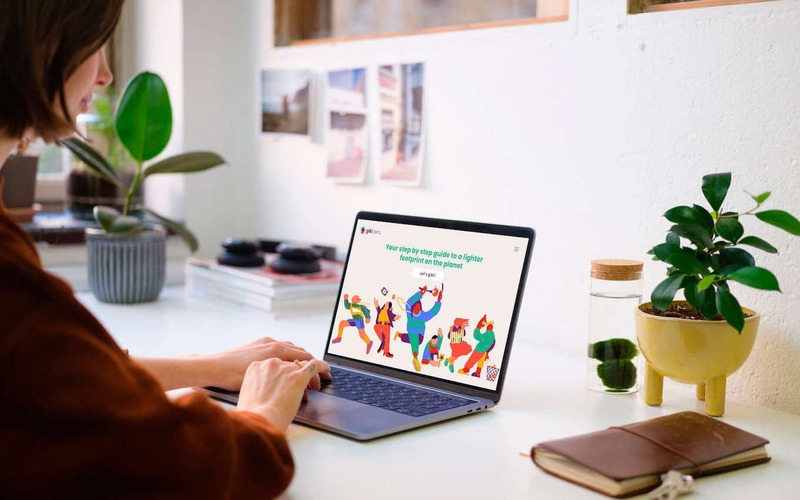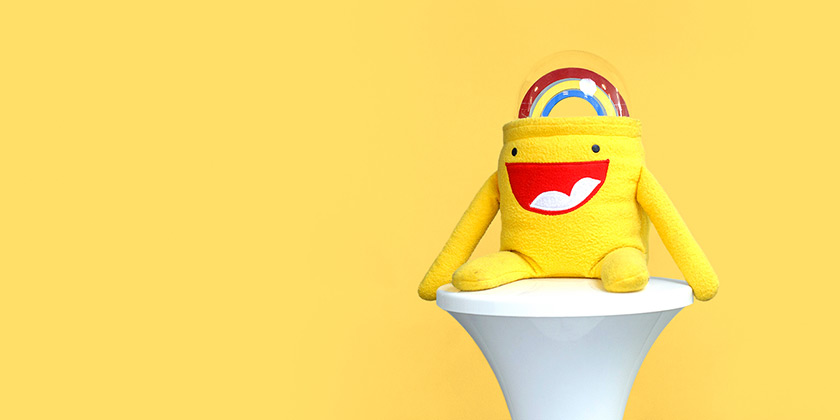Over the last few years, sustainability has grown to become a key part of our values at Kyan. As a technology agency, we have a responsibility, not only as a business, but also as individuals, to do the right thing.
My personal sustainability journey started some time ago – I’ve always been aware of the importance of my own actions. But as Kyan has grown, and ultimately our impact too, it felt only natural that I step into a role that not only allows me to drive forward and formalise our group sustainability efforts, but also a role where I can work with our team to ensure that we are the kind of business that people want to work for.
A business with sustainability at its core.
Do we need a Chief Sustainability Officer? (CSO)
Really, a CSO shouldn’t exist. It may sound like a strange claim, but it’s something that really stuck with me the first time I heard it. The ultimate role of a CSO is to ‘make the role of a CSO redundant’ by creating a business that has sustainability embedded at its core. In reality, the CSO role is relatively new to any business and whilst it’s promising to see it becoming more prevalent across many sectors, we have a long way to go before businesses and individuals think about sustainability autonomously. Hence the need for a CSO.
On the flip side, you could argue that even the most sustainable businesses in the world should still have a CSO to manage and review sustainability as the company grows and changes, and the world around it too. After all, sustainability is not a quick fix. It’s a continuous process. But there are key methodologies and approaches that we can put in place to make the role of a CSO, and ultimately the wider board, a lot easier. We’ll talk about those a little later.

It starts with values
Formalities aside, your first port of call should be your values as a business. Don’t just jump on the sustainability bandwagon. Ensure that it comes from the heart, and that it’s genuinely something that you and your employees truly care about.
It’s not difficult to spot green-washing, or purpose-washing (misleading claims around eco or sustainability efforts) from brands large and small, and it won’t take long for you to be called out if you’re guilty of it yourself. Whilst the sustainable and regenerative community is incredibly accessible and welcoming, no one is afraid to call out falsehoods. TL;DR: You can’t just plant a few trees and claim it as ‘job done’, being a truly sustainable business is much more than that.
More about my role as Kyan’s CSO
Transitioning to the CSO role was a big change for me, at least on paper. Previously, I was Creative Director for Kyan, where I worked closely with the design, UX and brand teams. My work was varied, with a wide range of responsibilities, teams and projects filling my time.
As a CSO, I am focused on one specific goal. This goal is clear to me, and in-turn, I need to make sure this goal is clear to our teams. I do this through regular slots in our monthly meets, reporting to the board, and the implementation of measuring systems such as Giki Zero and Green Element software, to better track our carbon footprint.

Traditional ideas of any job prefaced by ‘Chief’ conjure up thoughts of somebody in an office with the door closed. We're very much the opposite of that at Kyan, and in this role in particular, I welcome all and any contributions to the way we do things.
For that reason, we created the Sustainability Squad, an internal team open for all, which acts as a kind of forum. There are no stupid questions. There are no wrong answers. Just a shared passion for growing Kyan in a respectful and responsible way.
Getting down to business
But what does it really mean to inhabit the role of Chief Sustainability Officer, what does the job look like and what value does it add to an organisation?
I’ve divided the role up into three key pillars. In some ways these are phases too. Pillar two can’t be built without building pillar one, and so on.
1. Compliance and Implementation
Spoiler alert: the hard work starts straight off the bat. There is a lot of work to be done up front, and the best way to achieve this is to work to a framework. We did this by baking B Corp accreditation into our sustainability journey. This isn’t essential, and you shouldn’t think of B Corp as a competitive advantage, but it’s certainly helped us to better understand how we operate as a business, and gave Kyan an overall policy and procedure health check. I feel we are a much fitter business just by going through the application process. It’s a deep dive into your whole operational structure.
A large part of the implementation process is measurement. This gives you a clear picture of key metrics such as emissions, impact and diversity. Once this data is available, you can begin to set some tangible goals, such as carbon reduction and offsetting, and ultimately, net zero targets. Before long, you’ll have some robust KPIs in place that add structure and true governance to your sustainability efforts.
Whilst there is a lot of groundwork to be done at the beginning, the payoff is immense, and I have to always remind myself that ‘what gets measured gets done’.
2. Value and Efficiency
Pillar two is very much about actions and improvements, and it’s here that we start to see the benefits of the measurement and goal setting from pillar one. Once you’ve measured and set targets, you can put the processes in place to actually drive change. At Kyan we have implemented new processes to reduce our carbon footprint, changed our suppliers in some cases to more ethical and sustainable focused products, as well as introducing a Supplier Code of Conduct. We are improving recycling and waste management in the office and looking at reducing our waste overall by implementing an Environmental Management System (EMS) .
As I said earlier, we have a unique set of challenges as a technology company. Systems, software and hardware are intrinsic to what we do, and we must be acutely aware of the effect these services have on the environment not only around us, but across the world. Particularly as the work we do becomes increasingly distributed. Thankfully, we have little in the way of a supply chain, so much of our work here is digital rather than physical. However, we are taking our digital carbon footprint seriously, looking carefully at our hosting and third-party suppliers, implementing digital best practice for reducing our usage wherever we can, and ensuring the use of renewable energy sources.
Once again, we don’t just pick up the phone and switch energy suppliers. Whilst that’s a smart thing to do, these are long-term and often incremental changes. We must ask ourselves key questions. How can we work with our local council to improve our local footprint? How can we approach offsetting in a way that is conscientious? How do we make all of this clear and transparent to our staff?
3. Innovation and Fame
Fame is an unusual word here, but hear me out. I’m not in this role to get famous, and we’re not taking sustainability seriously to get famous as an agency either. But we know that we have a voice, we understand that a number of agencies, clients and suppliers look to us as a good example, and we want to make sure we use this position to influence change. Otherwise what’s the point?
Inspiration is a huge source of energy for me. When I see a business doing sustainability well, my first thought is “How can I make this work for Kyan?” This is what drives me, and in turn, I have a responsibility to drive that message way beyond my immediate colleagues and up and out there into agency land and beyond.

Helping others is a surefire way to bring everyone together and put us all at the same level of understanding. Sustainability is neither a race nor a cool club, it's for everybody. A while ago, I set up ESG Collective, a peer networking group, and co-founded the BIMA B Corp Bootcamp with our friends at Jago. I also speak on podcasts and webinars with a sustainability focus. If you’d like me to join yours then please let me know.
The social side of sustainability is incredibly satisfying, and when I feel like I’m getting bogged down with process and governance, I remember this amazing network of brilliant people all striving for the same thing – real, positive and effective change that we can all get behind together.
Our next focus is to widen the discussion about sustainability to include our clients, and to embed the thinking into our offering. I’m happy to claim that our team and development process is carbon neutral, but what about once our clients take over the maintenance and hosting of their applications? Helping and educating our clients around sustainability is also key to the role of the CSO. I’ll hold my hands up and say that we’re early-on in this stage of our journey, but it’s a challenge that we’re looking forward to.
Where do we go from here?
In contrast to my opening comment about making the role of the CSO ‘redundant’, I feel we’re far from that moment. But that’s a good thing. There is still so much to be done as we learn more about the world and how we as businesses and individuals affect the environment around us. Soon, we hope to be B Corp Certified, we’ll have many of the essential processes and procedures in place, and as a team, we’ll be acutely aware of how and why we have sustainability as a foundation to the #lifeofkyan.
We must continue to learn, continue to change, and continue to inspire others.
Please let me know if you’d like to talk about the role of a CSO, or more broadly about your business becoming more sustainable. I’d also love to hear from you about what you’re doing in your company or agency on this front. Let’s go on the journey together.
Email me | Connect with me on LinkedIn
We are Kyan, a technology agency powered by people.



